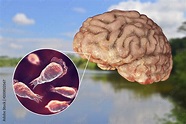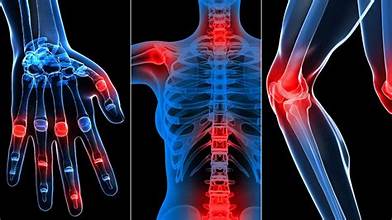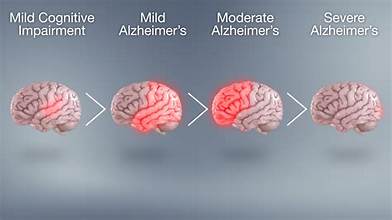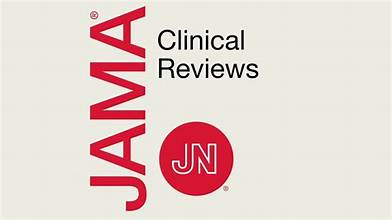Naegleria Fowleri commonly known as the brain-eating amoeba, is a species belonging to the genus Naegleria. It falls under the phylum Percolozoa and is categorized as an ameboflagellate excavate, meaning it has the ability to exist in both amoeboid and flagellated forms. Although it usually survives by feeding on bacteria, this free-living microorganism can become harmful to humans, causing primary amoebic meningoencephalitis (PAM) a very rare, sudden, and almost always fatal brain infection, also referred to as naegleriasis.
This amoeba thrives in warm freshwater environments such as rivers, lakes, hot springs, and geothermal waters. It can also be found in warm water discharged from industrial or power plants, poorly treated or insufficiently chlorinated swimming pools (with chlorine levels below 0.5 g/m³), as well as in water heaters, soil, and tap water pipes. Depending on conditions, Naegleria fowleri may exist either in its amoeboid stage or in a temporary flagellated form.
Almost all individuals who contract primary amoebic meningoencephalitis (PAM) lose their lives to the infection. From 1962 to 2024, a total of 167 cases were documented in the United States, with only four people managing to survive.
Epidemiology of Naegleria fowleri Infection:
Between 1962 and 2022, a total of 157 cases of Naegleria fowleri infection were reported in the United States, with no more than eight new cases identified in any given year. About 73% of these infections occurred during the summer months of July and August. The main source of exposure is typically contaminated water from lakes, ponds, or reservoirs. In the U.S., the infection has proven to be overwhelmingly fatal approximately 97% of patients have died, with only four known survivors since 1962.
The first documented survivor in the United States was described in a 1982 New England Journal of Medicine report. The case involved a 9-year-old girl from California who presented with three days of symptoms. Initially thought to have bacterial meningitis, she was later diagnosed with PAM after amoebas were detected in her cerebrospinal fluid (CSF). She was treated with a combination of amphotericin B, rifampin, miconazole, dexamethasone, and phenytoin. Within three days of starting therapy, her CSF tested negative for amoebas, and she eventually made a complete recovery.
Two additional survivors were reported in 2013. One was a 12-year-old girl who achieved full neurological recovery, largely due to rapid diagnosis and immediate treatment. The other was an 8-year-old boy who, despite receiving treatment, developed lasting brain damage after a delay in diagnosis. In 2016, a fourth U.S. survivor was identified a 16-year-old male who was given the same treatment regimen as the 12-year-old girl from 2013 and went on to fully recover.
A 29-year-old man passed away from Naegleria fowleri—commonly known as the brain-eating amoeba—at a hospital in Karachi, the Sindh Health Department reported on Saturday, September 13, 2025, marking the province’s fifth fatality from the infection this year.
How does infection with the brain-eating amoeba (Naegleria fowleri) occur?
The primary route of infection is through the nose when contaminated water enters the nasal passages. From there, the amoeba travels to the brain, where it causes infection. This typically happens during activities such as swimming, diving, or water sports like water skiing in contaminated freshwater. In very rare instances, infection has been linked to inadequately chlorinated swimming pools or heated tap water.
It is important to note that swallowing contaminated water does not cause infection.
How common is Naegleria fowleri infection?
Fortunately, infections are extremely rare in the United States, with an estimated zero to eight cases reported annually. Most occur in southern states such as Texas and Florida and primarily affect young males. However, in recent years, occasional cases have also been identified in northern states during unusually hot weather.
Some research suggests that infections may be underreported. The discovery of antibodies against Naegleria fowleri in certain individuals indicates that some people may have been infected and survived without being diagnosed. Additionally, a few deaths once attributed to meningitis have later been reclassified as cases caused by this amoeba.
Signs and Symptoms of Naegleria fowleri:
The initial signs of Naegleria fowleri often include fever, headache, nausea, and vomiting. The illness advances very quickly, and in most cases, death occurs within 1 to 18 days after the first symptoms appear, with coma and death typically developing around the fifth day.
As the disease worsens, additional symptoms may arise, such as neck stiffness, disorientation, difficulty concentrating or responding to surroundings, problems with balance, and hallucinations.
Causes of Naegleria fowleri:
Infection with Naegleria fowleri occurs when the amoeba enters the body through the nasal passages and reaches the brain. This typically happens when contaminated water is inhaled. The organism is most commonly found in warm freshwater sources, such as lakes, rivers, and hot springs.
In rare situations, exposure can also occur from inhaling contaminated dust particles. Additionally, some infections have been linked to the use of tap water instead of sterile or distilled water for nasal cleansing practices, such as with neti pots or similar devices.
Diagnosis and Tests:
When a healthcare professional suspects Naegleria fowleri infection, a lumbar puncture (spinal tap) is often performed to analyze the cerebrospinal fluid (CSF) for the presence of the amoeba. In some cases, a brain biopsy may also be recommended, where a small sample of brain tissue is collected and examined under a microscope to confirm the infection.
Treatment of Naegleria fowleri Infection:
The primary treatment for primary amoebic meningoencephalitis (PAM), caused by Naegleria fowleri, is the antifungal medication amphotericin B. In several North American cases, survivors were treated with a combination therapy that included amphotericin B, rifampin, fluconazole, and miltefosine a drug originally approved for the treatment of leishmaniosis, a parasitic infection transmitted by sandflies.
The most successful outcomes, seen in two pediatric patients who fully recovered, were linked to rapid diagnosis and immediate initiation of therapy. In addition to medication, therapeutic hypothermia (lowering the body’s temperature below normal) was used to reduce brain swelling, which contributed to recovery.
Prevention of Naegleria fowleri Infection:
Since the prognosis of this disease is extremely poor, prevention plays a crucial role—even though cases are rare. Here are important safety measures to consider:
- Avoiding exposure: Refrain from swimming, wading, or engaging in water sports in warm freshwater, particularly in stagnant or slow-moving areas, unless you are wearing nose clips. Completely avoid water activities in places where Naegleria fowleri is known or suspected to exist.
- Safe nasal rinsing: Never use untreated tap water in neti pots or other nasal irrigation devices. Instead, only use distilled or sterilized water. If tap water must be used, boil it for at least one minute (three minutes at elevations above 6,500 feet), then allow it to cool before use.
- Water filtration: When filtering water, choose filters labeled “NSF 53,” “NSF 58,” or those with an absolute pore size of 1 micron or smaller to ensure the removal of harmful microorganisms.
- Water disinfection: Chlorine bleach (liquid or tablets) can also be used to disinfect water intended for nasal cleansing. Note that the bleach concentration required for nasal use differs from that used for drinking water.
- Prompt medical attention: If you experience fever, headache, or other early symptoms after swimming in warm freshwater, inform your healthcare provider and mention your recent water exposure.
Conclusion:
Naegleria fowleri infection, though extremely rare, is one of the deadliest infections known to medical science. With a survival rate of only a few documented cases worldwide, the outlook for those affected remains grim. Because treatment options are limited and often only effective when started very early, awareness and prevention are the most powerful tools against this amoeba. Simple measures such as avoiding high-risk freshwater activities, using only sterile or properly treated water for nasal cleansing, and seeking immediate medical attention when symptoms appear can significantly reduce the risk. Ultimately, staying informed and practicing preventive habits is the key to protecting oneself from this devastating but preventable disease .








